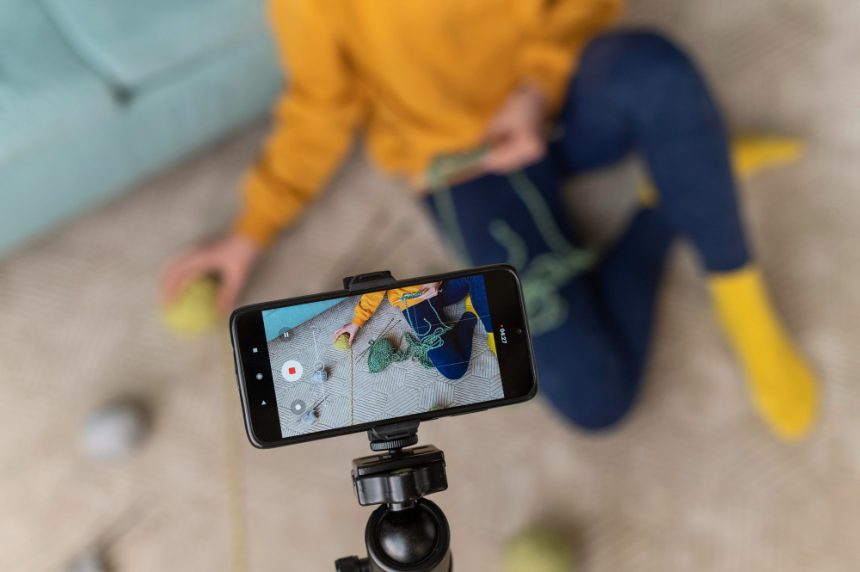The Cultural and Psychological Shift in Media Habits
Over the last decade, media consumption has undergone one of its most dramatic transformations since the invention of television. At the center of this shift lies the explosive rise of short-form video platforms—apps designed to deliver highly engaging, easily digestible clips directly into the hands of users who expect instant entertainment. This shift is not just about technology; it represents a deeper cultural and psychological recalibration of how audiences value time, storytelling, and personal engagement with media.
Where once the hallmark of media engagement involved sitting down for a full-length film, waiting for a weekly series to unfold, or dedicating an hour to a podcast, audiences are now comfortable absorbing information and entertainment through bursts of less than 60 seconds. The appeal lies in efficiency: short videos respect—or perhaps exploit—the shrinking window of human attention. They deliver a complete narrative in the smallest possible unit, catering to modern viewers who are perpetually multitasking, juggling notifications, and seeking novelty without commitment.
In this sense, short-form videos represent more than just entertainment. They are reshaping attention spans, redefining authenticity, and setting new standards for social interaction. Humor, emotion, opinions, and even personal identities are compressed into quick, punchy clips that allow for immediate connections with global audiences. Whether through lip-synched comedy skits, educational tips, or viral dances, the structure of content itself has become shorter, sharper, and more designed for virality.
This recalibration has consequences. On the one hand, the accessibility of storytelling has democratized creative expression and given rise to global communities that share interests at a pace unimaginable in traditional media. On the other hand, the dependence on instant gratification raises important questions: what happens when slower forms of narrative, investigative journalism, or even deep conversations no longer hold the same appeal? The declining stamina for extended content may point to a cultural trade-off between breadth of exposure and depth of understanding.
From Passive Viewership to Algorithmically Curated Micro-Experiences
Unlike television, which traditionally offered a linear and passive viewing experience, short video ecosystems are shaped by algorithms that curate highly personalized feeds. The result is a dynamic media model where audiences are no longer distant observers but active participants—scrolling, reacting, and reshaping trends in real time.
Algorithms drive the momentum of these platforms by rewarding micro-interactions: a like, a comment, a share, or even a second of extra watch time. In turn, content creators adapt rapidly, building micro-narratives tailored to algorithmic preferences. This environment emphasizes adaptability over depth. A creator who understands how to harness a meme, remix a trending sound, or deliver punchy value within seconds can capture audiences far more effectively than traditional media formats ever allowed, regardless of experience or production budget.
This transformation has produced fascinating cultural consequences. Trend-chasing has become a dominant creative strategy, with clips spreading globally in hours rather than days. Humor, snippets of advice, political commentary, and even academic breakdowns can all achieve viral circulation simply because the algorithm recognizes spikes in audience interaction. As a result, communities form around not just content but shared participation in fleeting cultural moments.
Yet, this immediacy comes with costs. Mental health experts have raised concerns about the addictive design of infinite feeds, where dopamine-driven scrolling habits blur the line between “snacking on media” and compulsive consumption. For creators, the pressure to constantly deliver fresh, snackable clips can lead to burnout, especially when algorithms reward frequency over long-term artistic quality. Entire creative careers now hinge not on the endurance of an idea, but on the speed of content output and the ability to satisfy an audience perpetually hungry for novelty.
At the same time, media companies are rethinking strategies. Traditional broadcasters, publishers, and streaming services have all tried to incorporate short videos into their models—from promotional clips to abbreviated storytelling formats—realizing that without a presence in the short-form ecosystem, long-term audience growth is jeopardized. Even podcasts and documentary producers are breaking down their content into highlight reels and teasers to funnel attention into longer works, recognizing that many people no longer commit to extended formats without first encountering the bite-sized version.
The Future Value of Creativity in a Shortened World
The rise of short video consumption reflects a larger societal negotiation between convenience and depth. Quick clips succeed because they meet people where they are: in moments of waiting, commuting, or scrolling before bed. However, the question remains whether this is fostering a sustainable cultural environment for creativity.
Storytelling has always thrived on patience, development, and reflection. Ancient myths, novels, and long-form journalism exemplify humanity’s appetite for immersion. Yet, the short-form video era challenges this legacy by asking: can meaning, identity, and cultural resonance exist at the speed of a swipe? For many, the answer is yes—because depth is now redefined. A humorous 15-second video may not carry the weight of a novel, but it can capture shared feelings and unite millions in laughter, solidarity, or sudden awareness of an issue.
This duality suggests that media consumption is not simply declining in depth, but rather diversifying in form. While short clips dominate attention spans, there is still space for slower, more in-depth storytelling—so long as creators and companies understand how to bridge the gap. The future of media may involve a hybrid model: short videos capturing attention first, then guiding audiences into broader, longer narratives for those willing to dive deeper.
In the end, the era of short videos represents more than a change in format—it is a cultural mirror reflecting how people negotiate modern life’s most pressing demands: limited time, constant distraction, and the need for meaningful connection. Whether short video consumption ultimately enriches or diminishes our storytelling traditions will depend on how creators, audiences, and industries balance novelty with sustainability, and immediacy with depth, in the evolving landscape of digital media.
✅ In short: Media consumption is changing from long-form commitment to short-form immediacy. Algorithms, cultural participation, and psychological shifts are driving this change. The result is both empowering and challenging—transforming not only how we watch, but how we think, connect, and create.











